Ever since the Lumière brothers first set up their cameras, there have been a number of film-makers who have attempted, in various ways, to capture “truth” on celluloid. Albert Maysles, who has died aged 88, came from a long line of documentary seekers of truth and was himself an inspiration for many who followed. In the tradition of kino-pravda (“cinema truth”) in the USSR in the 1920s, free cinema in Britain in the 50s, and cinéma vérité in France in the 60s, came the US direct cinema movement, as it was named by Maysles.
Unlike the contemporaneous cinéma vérité, the practitioners of direct cinema were less ideological and believed that the camera should be as unobtrusive as possible. Albert, as cameraman, carried the lightweight, silent camera that he perfected on his shoulder, its accessories built in and ready for adjustment. His younger brother, David, as soundman, had a sensitive directional mike and a Nagra recorder. They looked upon their work as a discovery of how people really behaved, first spending time with them to get acquainted, then filming their lives as lived. They emphasised that nothing was staged. It was “theatre without actors; plays without playwrights”.
It might have helped that both brothers, born of Russian-Jewish immigrants in Brookline, Massachusetts, took degrees in psychology before becoming film-makers. After serving in the US army tank corps during the second world war, Albert Maysles taught psychology at Boston University. This subject, his family background and an interest in photography, inspired him to travel by motorcycle throughout Russia in 1954, taking photographs inside hospitals for the mentally ill. Although he was unable to sell this photo-essay, CBS gave him a 16mm camera and unlimited film stock with an agreement that it would pay him $1 per foot of any developed film it chose to use. Maysles returned to the Soviet Union and made his first film, Psychiatry in Russia (1955).
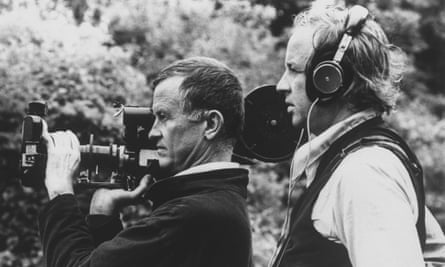
Two years later, he and his brother shot Youth in Poland, footage of a student revolt in Warsaw, which they sold to NBC. Shortly afterwards, Albert met the film-maker DA Pennebaker, who in turn introduced him to the pioneers of cinéma vérité Robert Drew and Richard Leacock. They were all around the same age and shared a similar vision of documentary cinema. Their first association was Primary (1960), vibrantly shot during John F Kennedy’s campaign against Hubert Humphrey for the Democrat party nomination in Wisconsin. While Drew was credited as director, it was a true collaborative effort, Maysles sharing the hand-held cinematography with Leacock. The film was one of the first American documentary films that allowed the camera to capture the events “as they happened”, with little narrative shaping or comment.
According to Albert: “Somebody had to break through the stupidity of documentaries depending solely on a narrator to explain what was going on and just interviews. There’s a world out there where things have to be observed, should be observed. And the rewards are that you really get to know the world, not the philosophy or point-of-view of the narrator or a corporation.”
The Maysles brothers then started making films on celebrities, such as Showman (1963), about the producer Joseph E Levine, Meet Marlon Brando (1965) and A Visit With Truman Capote (1966), all of which show their subjects in an affectionate light without flattering them.
Salesman (1968), at the opposite end of the fame scale, focused on four Irish door-to-door Bible salesmen. “We found out that there were 4,000 guys out there selling the Bible. That they would be selling this as a product rather than a spiritual testament made it all the more interesting,” Albert recalled. “When we were kids, there was so much antisemitism in Boston. There was hardly a day when some Irish kid wouldn’t come up to me and go, ‘Let’s go outside and get into a fight.’ So the film was kind of a way of getting to know the Irish in a very meaningful way. Giving them recognition.”
The Maysleses’ philosophy of allowing events to happen in front of the camera ran into some trouble when the brothers, with Charlotte Zwerin, made their most controversial film, Gimme Shelter (1970), a documentary of the Rolling Stones’ free concert held at Altamont Speedway, near San Francisco, in December 1969, in which the fatal stabbing of a black youth by a member of the Hell’s Angels was caught on film. Many critics felt that it was exploitative, some suggesting that the film-makers were complicit in the murder, photographing it and then profiting from the film’s theatrical release. The directors seemed to have compounded their error by using the structural device of having the Stones witness slow-motion footage of the killing.
The New Yorker’s Pauline Kael put the rhetorical question: “If events are created to be photographed, is the movie that records them a documentary, or does it function in a twilight zone? Is it the cinema of fact when the facts are manufactured for the cinema?”
More questions about whether objectivity is possible in documentaries were raised in Grey Gardens (1975), a fascinating “non-fiction feature” on an eccentric mother and daughter who may or may not be performing for the camera in their decaying Long Island mansion.
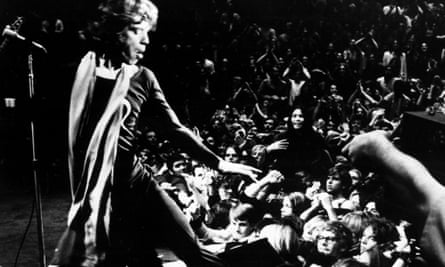
Maysles, who shot all his own pictures, always worked as part of a collective, often sharing the director’s credit with his soundman and co-producer brother, editors and another cameraman. Later in life he concentrated on portraits of classical music performers – Vladimir Horowitz: The Last Romantic (1985), Ozawa (1985), about the conductor Seiji Ozawa, Jessye Norman Sings Carmen (1989) – as well as environmental art, with Christo in Paris (1990). He also dealt for the first time with social issues, co-directing with Deborah Dickson and Susan Frömke Abortion: Desperate Choices (1992), which traces the history of abortion in the US, and Lalee’s Kin: The Legacy of Cotton (2001), an account of an African-American family in the Mississippi Delta trying to cope with poverty. By letting people speak for themselves, the directors avoided sentimentality. Maysles was against documentaries that expressed the film-maker’s bias.
Among his last released feature films as cinematographer and director was The Love We Make (2011), which was based on the 16mm, black-and-white material he shot while following Paul McCartney as he prepared for his appearance at the Concert for New York at Madison Square Garden soon after the attacks on the World Trade Centre.
“As a documentarian I happily place my fate and faith in reality,” Maysles declared on his website. “It is my caretaker, the provider of subjects, themes, experiences – all endowed with the power of truth and the romance of discovery. And the closer I adhere to reality, the more honest and authentic my tales. After all, knowledge of the real world is exactly what we need to better understand and therefore possibly to love one another. It’s my way of making the world a better place.”
David died in 1987. Albert is survived by his wife, Gillian Walker, a family therapist, and three children, Rebekah, Sara and Philip.


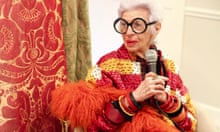
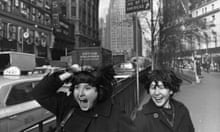
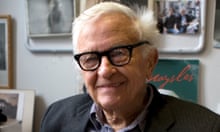
Comments (…)
Sign in or create your Guardian account to join the discussion